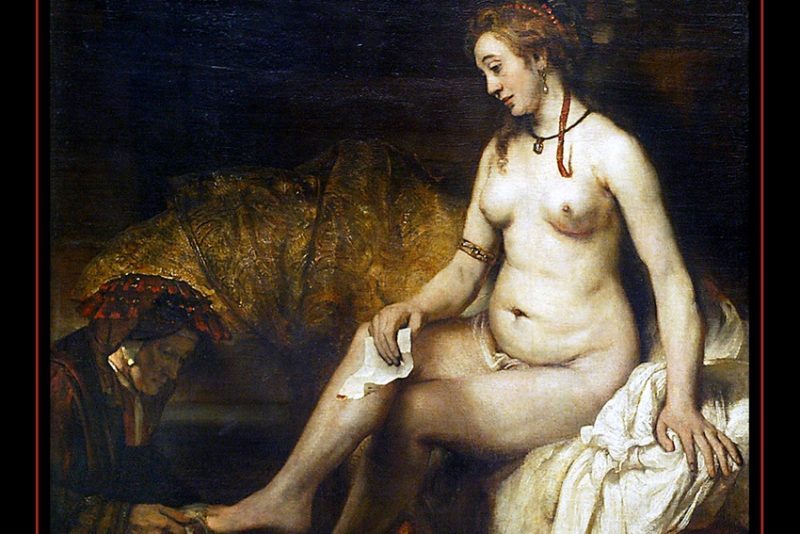One of the Museum’s most popular works has become more opaque due to ageing of its varnishes
“Bathsheba at her Bath” (or “Bathsheba with King David’s Letter”) – an oil painting by Rembrandt from the mid-17th century – has been hanging in the Louvre since 1869. It has now been removed from the rails of the famous Parisian museum and been taken to the restoration workshop of the Centre de Recherche et de Restauration des Musées de France, also housed within the Louvre.
“I decided to launch the restoration programme of this painting because the oxidisation of the layers of varnish and their irregularity has got to the point where you can find real difficulty in reading this piece.” So says Vincent Pomarède – Director of the paintings department of the Louvre before this magnificent and much-loved piece of art as it sits on an easel in the workshop.
“With the passage of time, the dark areas have become more dark and because of that, we real problems in understanding this painting… the shading has yellowed.”
The idea, he explains, is to reduce the thickness of the layers of varnish, by removing the most recent ones that date from the 19th and the 20th centuries.
The delicate operation is in the hands of the widely recognised restorer Regina Moreira. It will start in February and will continue for the whole year. Her progress will be overseen by a commission of experts from France and abroad.
The painting, which was created by Rembrandt in his mature years in 1654, is the most famous example of his work amongst the Louvre‘s collection. “We have here the greatest female nude piece by Rembrandt which has come into our possession,” says Louvre conservationist Blaise Ducos, adding that the only one that can be compared to it is the “Danaë” in the Hermitage in St Petersburg – a painting which which was vandalised beyond repair.
The masterpiece depicts a story from the Bible. King David, having caught sight of Bathsheba in her bath, falls for her womanly charms and summons her with a written missive.
“Usually, artists represented young women as seductresses. But here, Rembrandt chose to show us a melancholy Bathsheba, who understood that she would not be able to evade the royal injunction and who is envisaging all the tragic consequences of this abuse of power,” says Mr Duclos. “This illustrates the profound humanity of the artist.”




 Tootlafrance is Ireland’s fresh new eyes on France, bringing you the latest news, exclusive celebrity interviews, political analysis, cultural events, property news and, of course, travel features written by top Irish journalists.
Tootlafrance is Ireland’s fresh new eyes on France, bringing you the latest news, exclusive celebrity interviews, political analysis, cultural events, property news and, of course, travel features written by top Irish journalists.